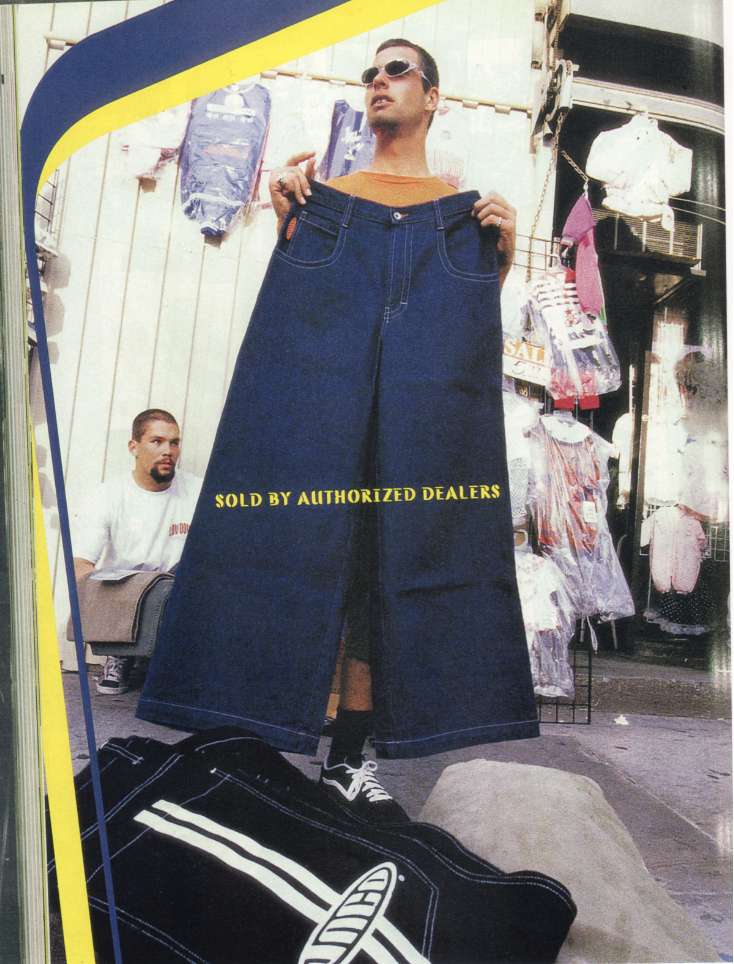By Aloe Ronen
JNCO jeans are back in style- from the 90s to the present, let’s unpack the wild ride of this fashion phenomenon.

JNCO jeans, known for their wide-leg silhouette in the 90s have unexpectedly danced back into the limelight, fueled by fashion nostalgia. For those yearning for the oversized denim parachute look, it’s time to say hello, once again, to JNCOs. While jeans are often thought of as a timeless uniform, JNCO jeans never played it safe. They presented the world with a larger-than-life denim dream. Known for their ultra wide-leg and enormous back pockets that could double as a backpack, JNCO was a sensation among skaters and ravers in the 90s. Now, they’re back in the spotlight, riding the wave of 90s nostalgia that’s sweeping through the fashion world leaving everyone wondering: Where did it all begin?
Back in 1985, the JNCO brand was born, founded by the brothers Haim and Yaakov Revah. Born in Morocco but raised in France, the brothers were inspired by LA street culture. In particular, they found their muse in the wide-legged pants worn by the Latino population in East LA neighborhoods. They first dabbled in the fashion scene with their exclusive brand, Revtex, which created primarily private apparel for retail chains. But the brothers had their sights set much higher than just Revtex. They wanted to go public with their unique fashion idea, and so in 1993, the JNCO brand was unleashed upon the world. The name JNCO supposedly stands for “Judge None Choose One,” although there are whispers it might mean “Journey of the Chosen Ones,” or even just “Jeans Company.”

What made JNCOs stand apart from the denim crowd? They boasted a billowy, feet-concealing silhouette quite unlike any other. JNCO proudly refers to themselves on their website as “THE ORIGINAL WIDE LEG JEANS.” In the 90s, JNCOs were huge, both in their cultural impact and their leg openings. At their peak, JNCO leg openings could reach over 50″. To some, they were jeans. To others, they were a denim tornado masquerading as a skirt.

Reddit: Syrocybin
So how did these baggy masterpieces rise to fame in the 90s? The Revah brothers knew their audience: edgy teen boys in the skater, grunge, and rave communities. They recruited local graffiti artists to design and print advertisements. Rather than going mainstream, they statistically focused on promoting their brand in places that their buyers would respect.
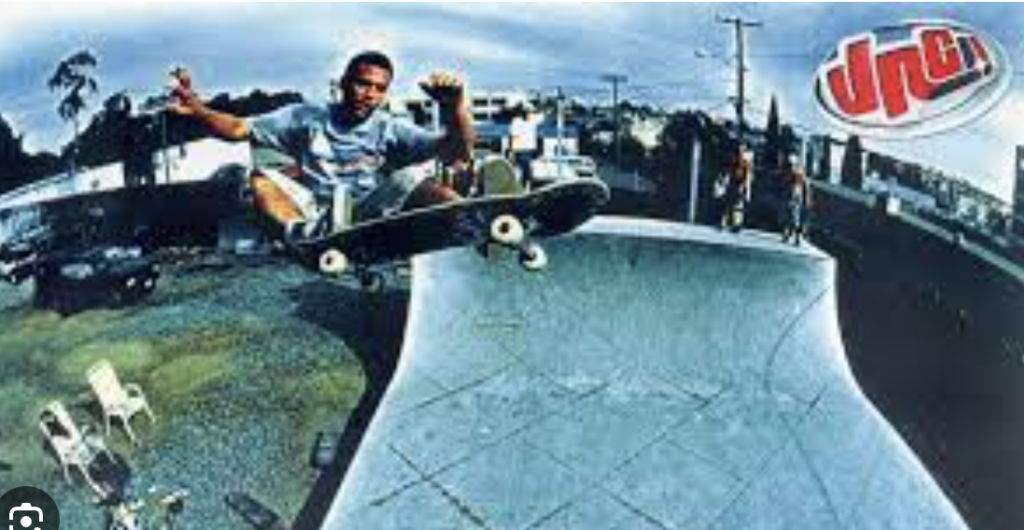
Murals sprang up in popular places where teens gathered, such as outside high schools and skateparks. JNCO also sponsored and attended extreme sports events to increase their exposure and up their street cred. ”We keep in constant touch with our customer,” said Tam Miller, vice president of sales and marketing at JNCO. ”We pay very close attention to everything they say. In my neighborhood, there is a skating ramp and I go there and bring samples all the time. When I go home, all the kids run around and ask, ‘What’s new?’ ”
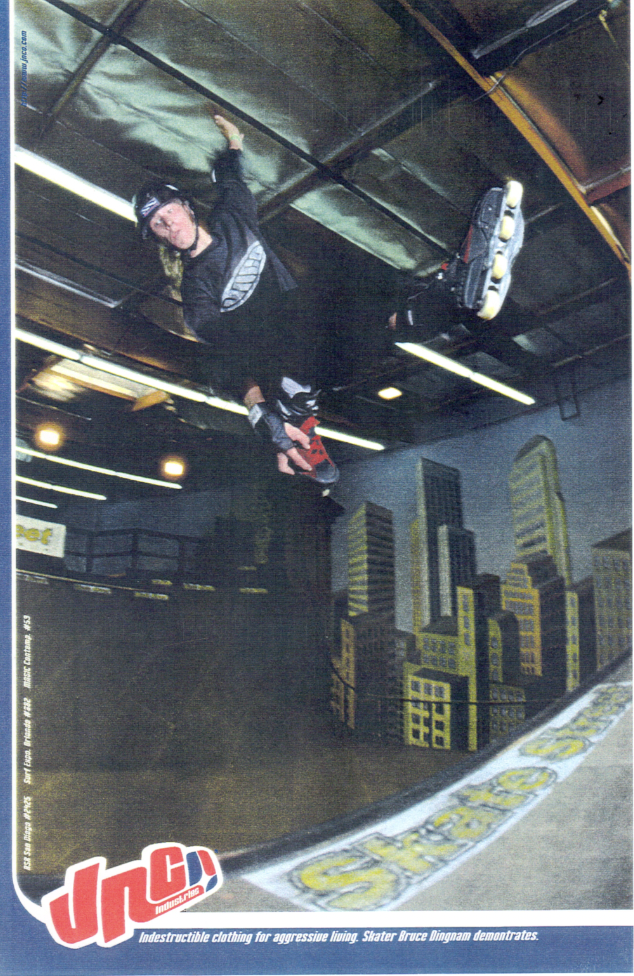
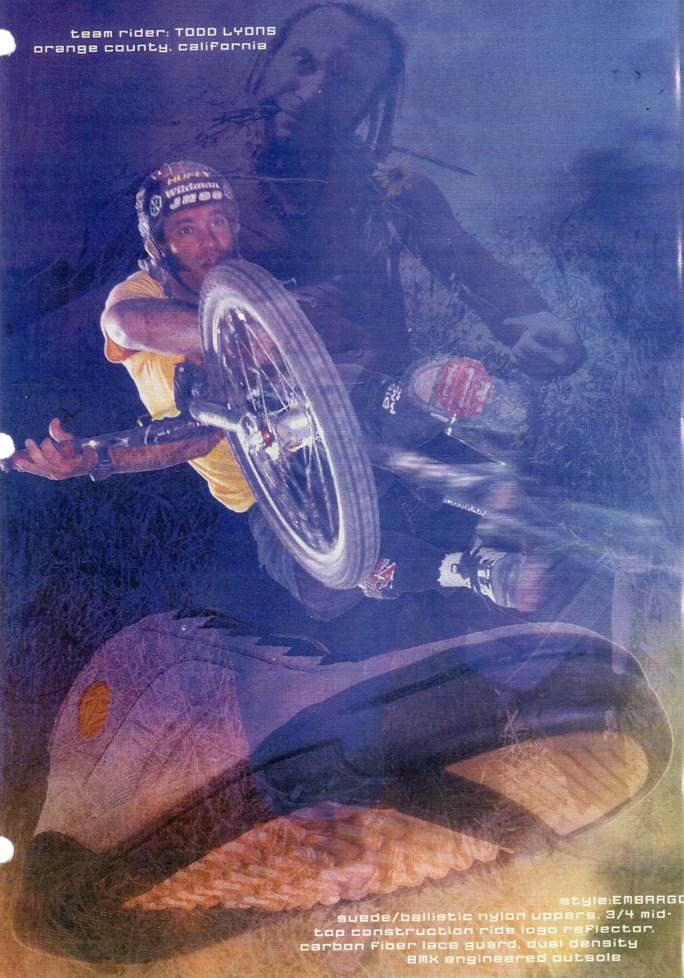
When JNCO roped in local graffiti artist Joseph Montalvo, also known as Nuke, the brand gained momentum. Nuke, a big name in the LA community designed the now iconic signature JNCO crown logo.
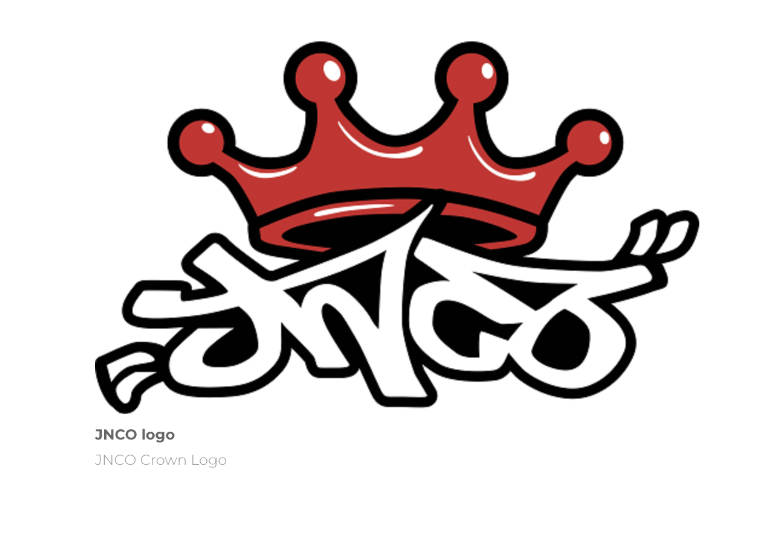
The Revahs knew that JNCOs were an acquired taste. Everybody knows that baggy pants are all fun and games until it rains. Not everyone fancied tripping over their pants and earning judgmental sideways glances from the older generation on the street. But for those who did, JNCOs were a match made in heaven.
JNCOs are famed for their enormous back pocket, often embellished with a cartoonish design. To the pantaloon wearers, JNCOs were more than just a fashion statement. They were a symbol of counterculture. They were a dare of defiance. Jeans that were both baggy and bold. They wanted to stand apart from the social norms of the time, and the excessive bagginess of the jeans certainly made it easy. The more judgmental the adults’ looks, the brighter the JNCO flame burned.
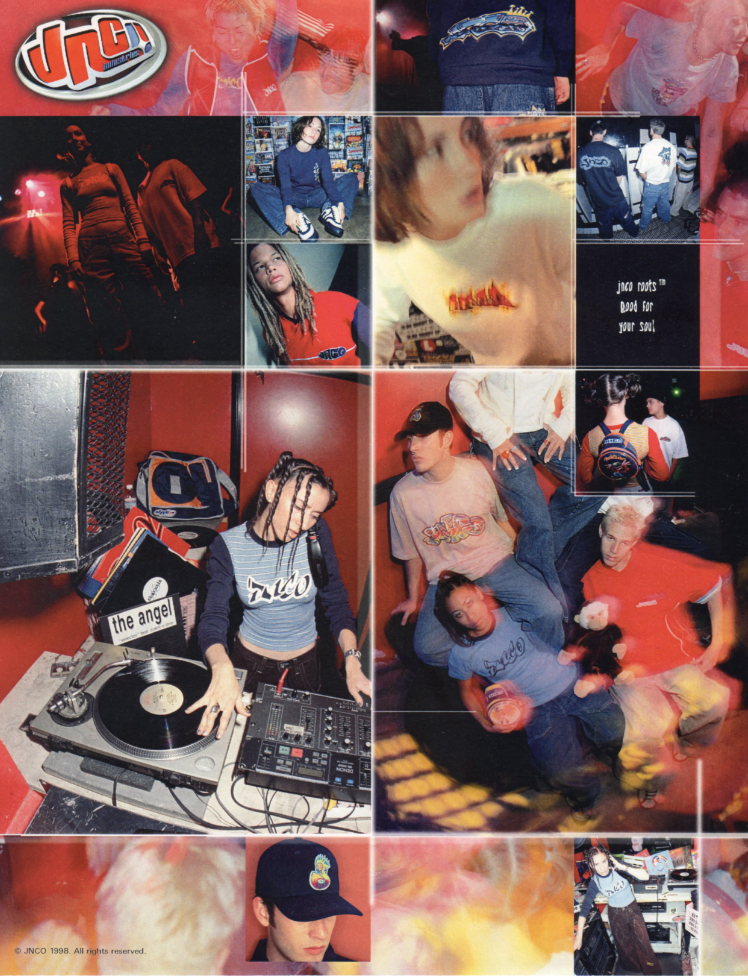
JNCOs continued to grow larger and larger, reaching a point of excess that some argue. The Revah brothers started a fashion frenzy that defined much of 90s fashion. By 1995, JNCO sales reached a whopping $36 million. The brand continued to grow through its underground promotional tactics, reaching peak sales in 1998 with an astonishing $186.9 million.
Many schools, understandably baffled by JNCO’s enormity even tried to ban JNCOs from their dress codes, claiming that the jeans were a storage unit for weapons and a tripping accident waiting to happen. The wearers looked cartoonishly unprofessional, a poor representation of any school’s values. And let’s not forget those frayed, muddy hems. “They think it’s gangster,” complained 16-year-old Eryn Devine to The Los Angeles Times in 1998. But, teenagers being teenagers, the schools’ disapproval only made them cooler. These jeans were a shout of personal expression that no dress code could silence. “Kids might be told what not to wear,” said 17-year-old Dane Carlson to The Los Angeles Times, while his baggy jeans sagged. “But they react by wearing it anyway.”

Original JNCO print ad
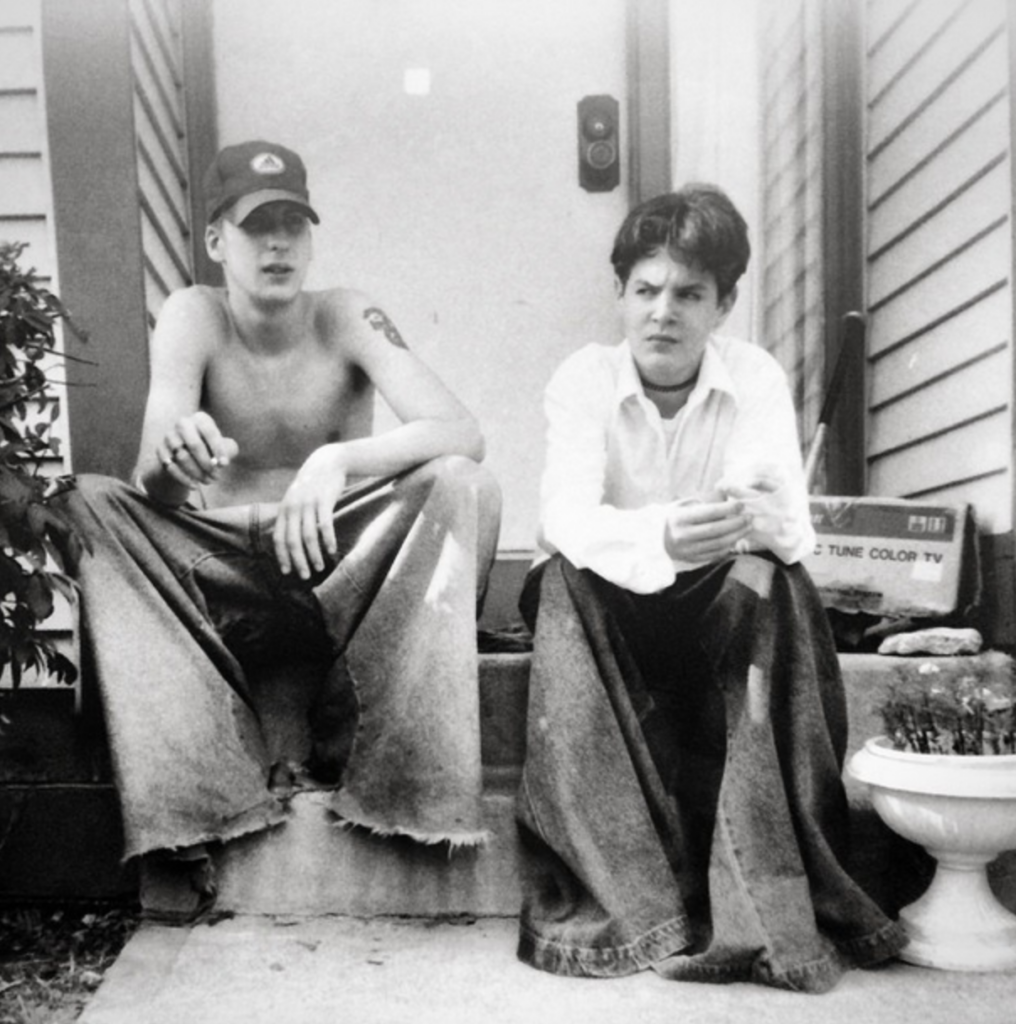
The classic foot-hiding JNCO look.
Photo: WorldPress.com
Cindy Levitt, the merchandise manager for Hot Topic, announced in 2000 that JNCOs went out of style the moment they became too trendy. “You still see JNCO at raves,” said Levitt to The Los Angeles Times. “But it’s a little uncool for our customer. It’s at too many doors in the mall.” And just like that, the JNCO phase seemingly came to an end. Adults rejoiced, and teens moved on to the next shiny object of a fashion trend.
By the time 1999 rolled around, sales had nearly halved from the previous year, totaling $100 million. JNCO’s Los Angeles garment factory shut its doors, leaving 250 people unemployed. In 2000, the Revahs opened a store in Paris, hoping to woo a new crowd. “It is our claim to fame,” said Miloh Revah to The Los Angeles Times. Although JNCOs had seemingly lost their appeal, a 2000 survey from Teenage Research Unlimited discovered that JNCO was still among the top 20 favorite brands of teen boys at the time. However, the JNCO appetite was gone, and in 2001, JNCO said goodbye to their 10,000-square-foot showroom and main factory.
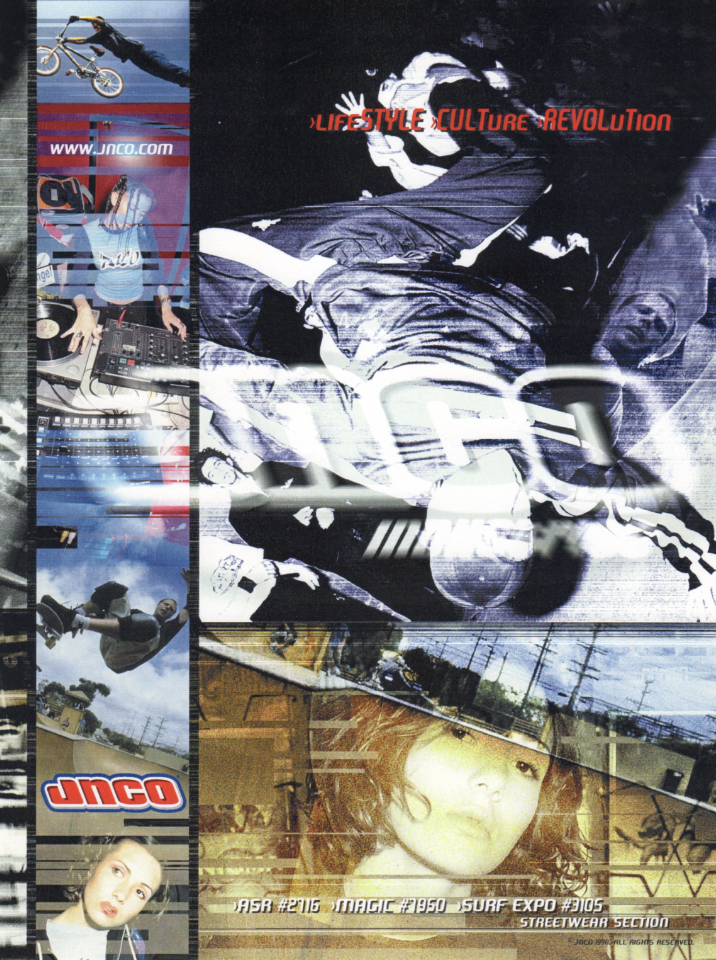
Original JNCO print ad
Fast forward to 2015, a Chinese investment firm, Guotai Litian, decided to roll the dice and purchase the brand for a hefty sum to relaunch it. However, the new products never gained the same popularity as the original 90s treasures. JNCOs just simply weren’t hitting the same.
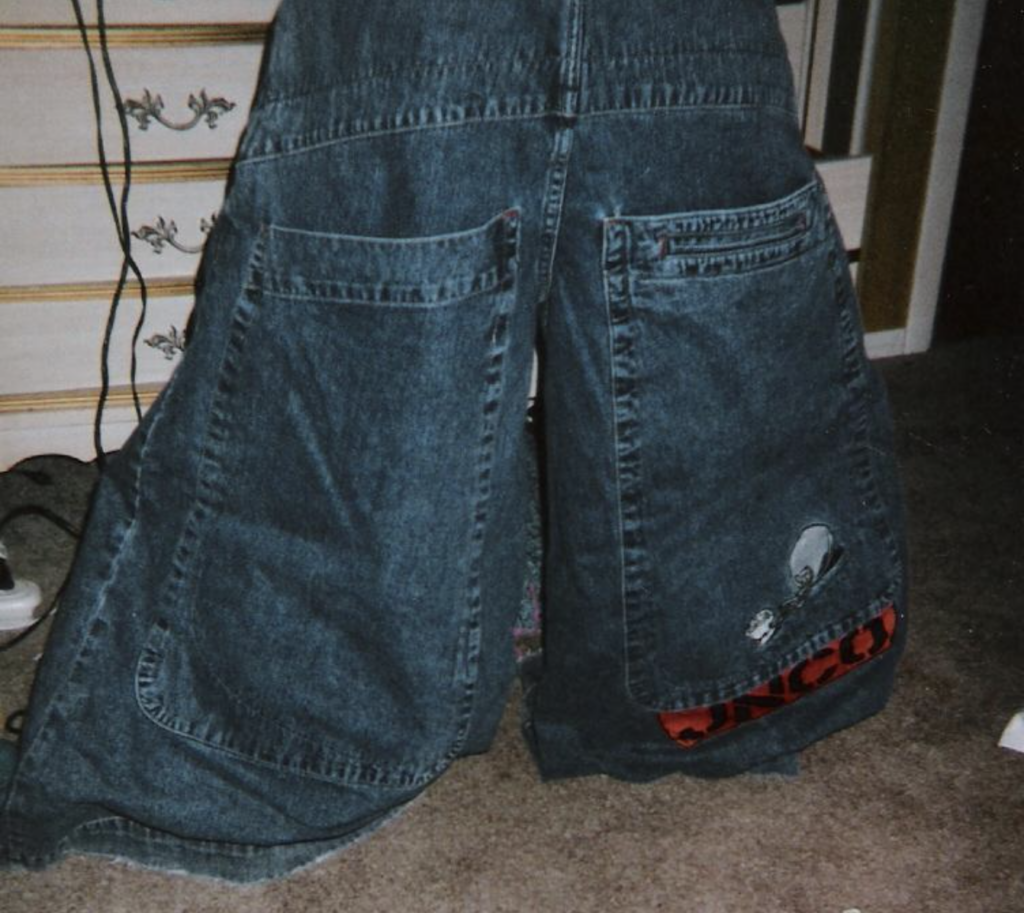
On February 15, 2015, JNCO decided to call it quits and cease production. By 2018, JNCO had faded into obscurity. In a bittersweet goodbye post on their website, JNCO wrote, “While this is the end of an era for JNCO, what JNCO stands for will continue to live on in all of our customers and fans who will carry on the spirit of our brand and all it represents. Stay true, JNCO lovers!”
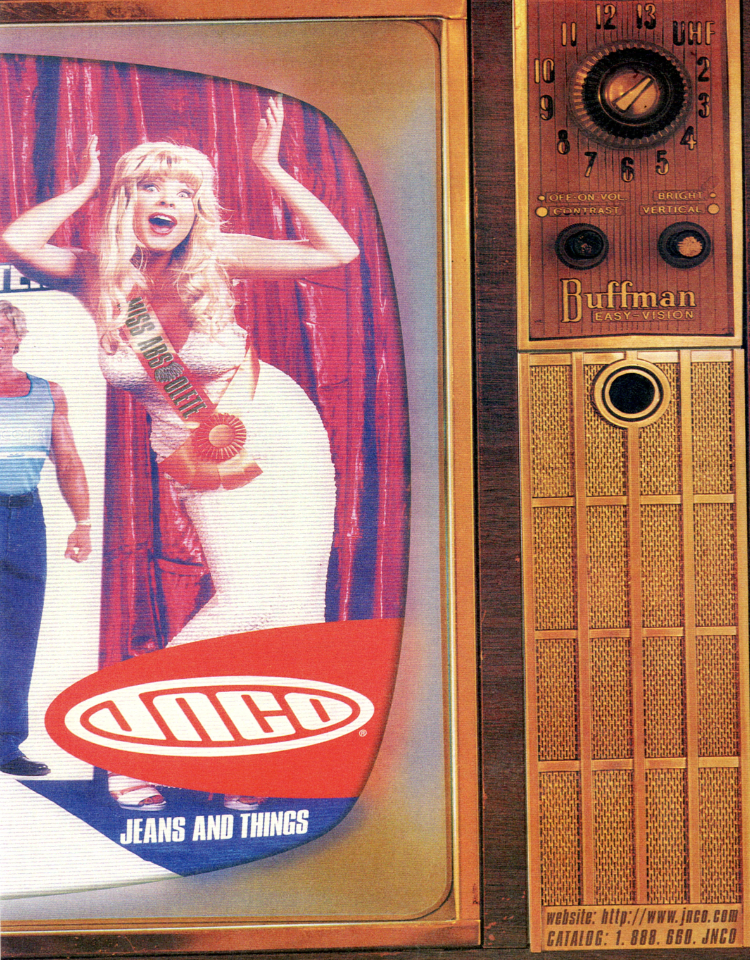
Original JNCO print ad
But as the wheel of fashion tirelessly spins, JNCOs have made a comeback in recent years, sparking mixed opinions: a fashion nightmare for some, a new craving for others. Jamie Boland, a junior at The Field School and JNCO enthusiast, attributes this resurgence to good old sentimentality, saying, “There’s like this phenomenon where 20 years prior there’s this sort of nostalgia for that generation… music, fashion, everything.” In today’s society, people find comfort and a sense of identity in the distant familiar. It’s not just about donning JNCO jeans, but also about listening to the music of bands like Nirvana and A Tribe Called Quest, and immersing oneself in the fashion trends that defined that era.
Trends, with their cyclical nature, have securely anchored the 90s as an enduring influence on our present, for better or worse. And yes, your parents are probably rolling their eyes. As a result, JNCOs have gained popularity as vintage gems, frequently sold on second-hand clothing platforms like Depop and Vinted. The revival of the JNCO frenzy has transformed these jeans into coveted collectibles. Some pairs are even being snapped up for hundreds of dollars, a price that would undoubtedly make original JNCO wearers choke and exclaim, “You’re spending how much on those pieces of junk?!”
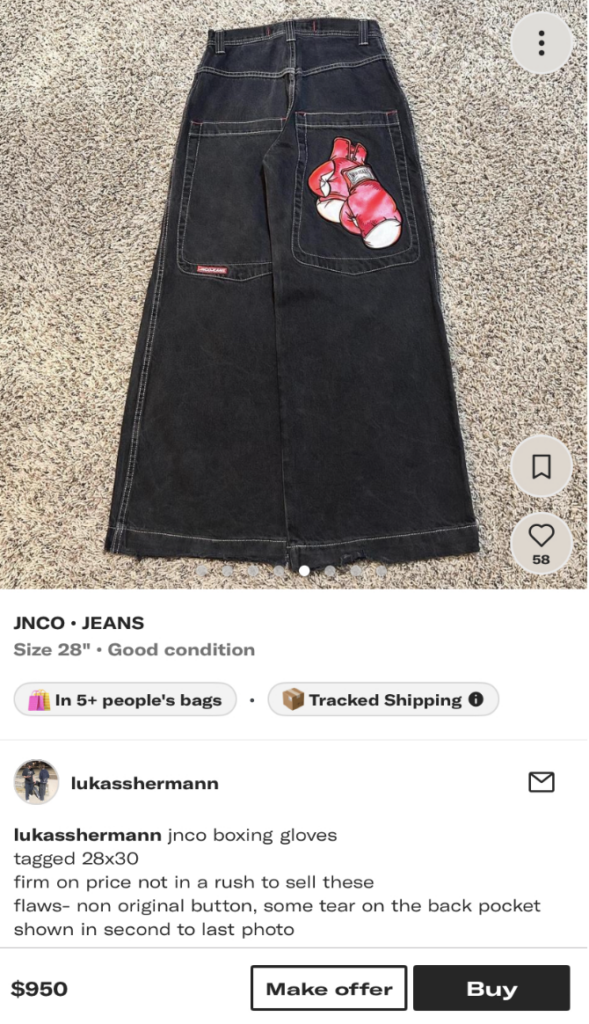
Vintage JNCO pants reselling for nearly $1000 on Depop
JNCO credits their fresh wave of success to a longstanding line of support from their faithful fans in the 90s, saying on their website, “JNCO WIDE LEG JEANS CAPTURED THE IMAGINATION OF A WHOLE GENERATION…THE BEST PROOF OF THIS LEGACY IS OUR LOYAL FOLLOWERS, WHO THROUGH THE YEARS COLLECTED AND TRADED THESE AMAZING JEANS…WE ARE ON FOR THE SECOND LEG OF THIS INCREDIBLE JOURNEY. THANK YOU FOR YOUR CONTINUED LOYALTY.”
While JNCO jeans can still be snagged off the official relaunched JNCO website, true fans prefer to hunt for authentic vintage pieces through second-hand channels. Flea markets have become hotspots for teenagers seeking those rare original JNCO finds, and Jamie himself is a regular at his local flea market, where he buys and sells these unique jeans.

Jamie Boland rocking JNCOs at his stand at the Georgetown flea market in Washington, D.C.
Photo: Aloe Ronen
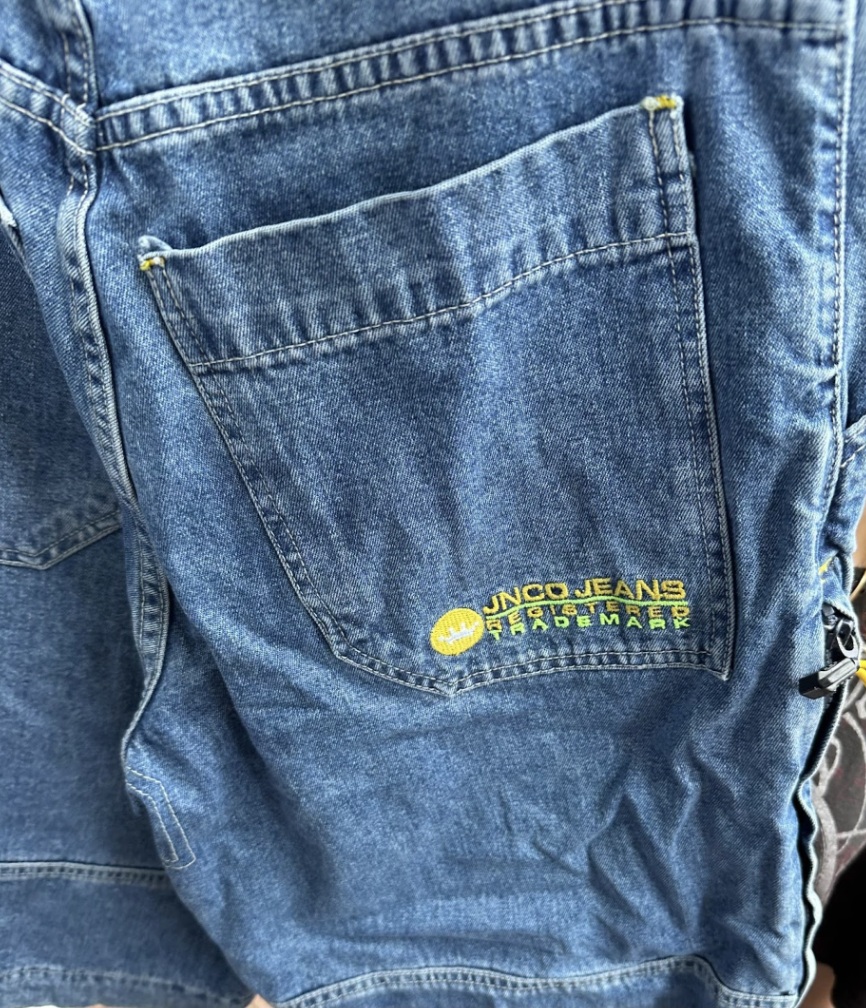
JNCO jorts found this summer at the Georgetown flea market. Photo: Aloe Ronen and Jamie Boland

Jamie recalls his own experience jumping on the JNCO craze, explaining, “I started wearing them to school and I had a giant pair and it was quite the spectacle… people were like, ‘what the hell are you wearing?’”.
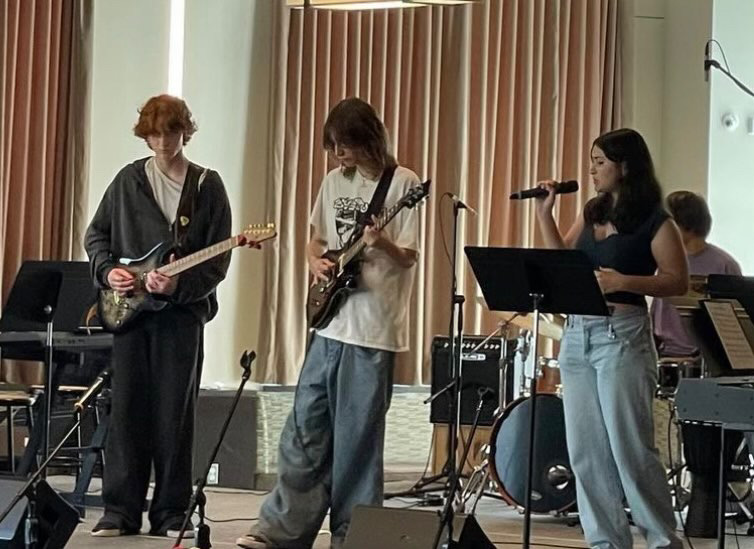
Jamie Boland (center) in baggy JNCOs playing his headless electric guitar at The Field School
However, he says, as more people begin to embrace the trend, skepticism has turned into acceptance. Jamie explains that JNCOs, “started becoming super accessible and then when it’s accessible everyone starts wearing it.”
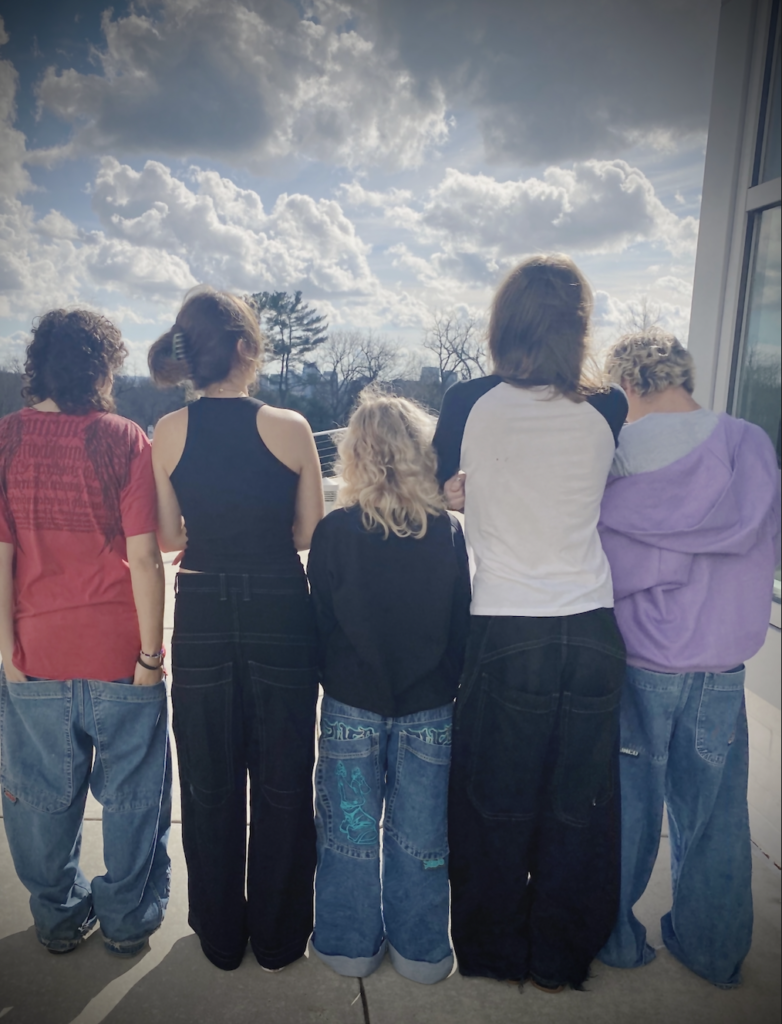
Students at the Field School sporting their JNCOs (Left to Right) Kai Fuller, Ilse Lidbetter, Aloe Ronen, Jamie Boland, Ibrahim Mokhtarzada
The unique and eye-catching silhouette of JNCOs continues to draw curious looks even two decades later, and it seems like many now want a taste of this nostalgic fashion bite. Even celebrities like Justin Bieber have been spotted rocking JNCOs, further cementing their return to the fashion spotlight.
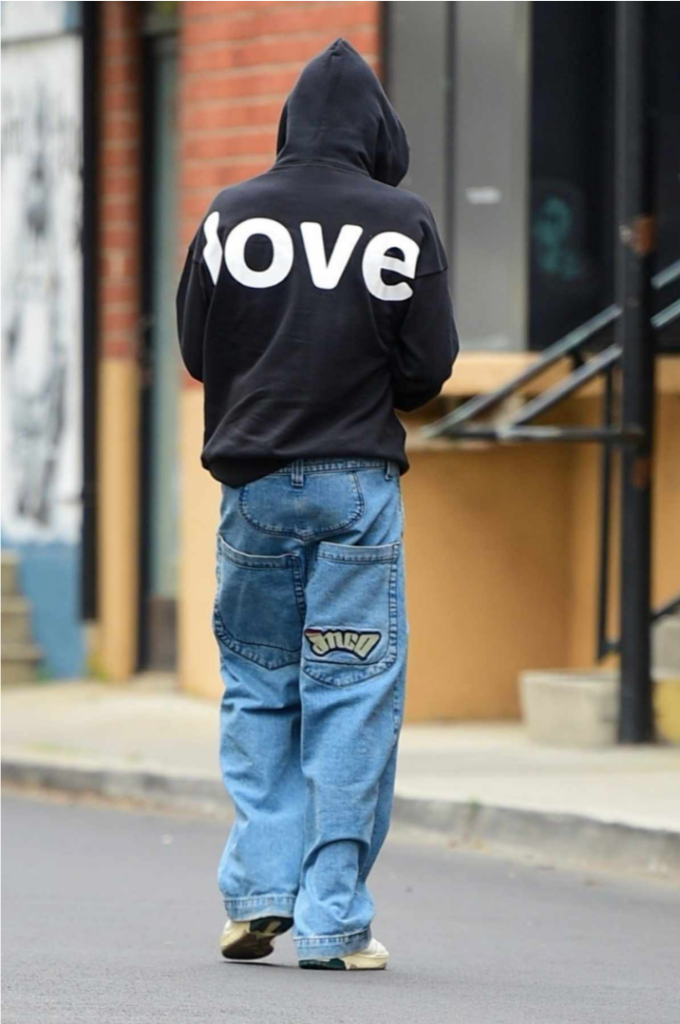
Justin Bieber was spotted wearing JNCO’s signature back pocket design this June. Photo: Backgrid
The question remains: will JNCOs remain a lasting presence in the fashion world? With the resurgence of baggy silhouettes and the grunge-inspired JNCO look gaining traction in the mainstream, it seems that these iconic jeans may have carved their niche in contemporary style once again. Will the JNCO frenzy fade to fashion trends for a second time? It’s likely. Will the new generation of JNCO look back and laugh at themselves in a few years? That’s also probable. Also likely. But whether loved or hated, there’s no denying that JNCOs have left a permanent mark on fashion history. They may not be for everyone, but for those looking to defy convention, JNCOs offer a statement that never fails to turn heads.
